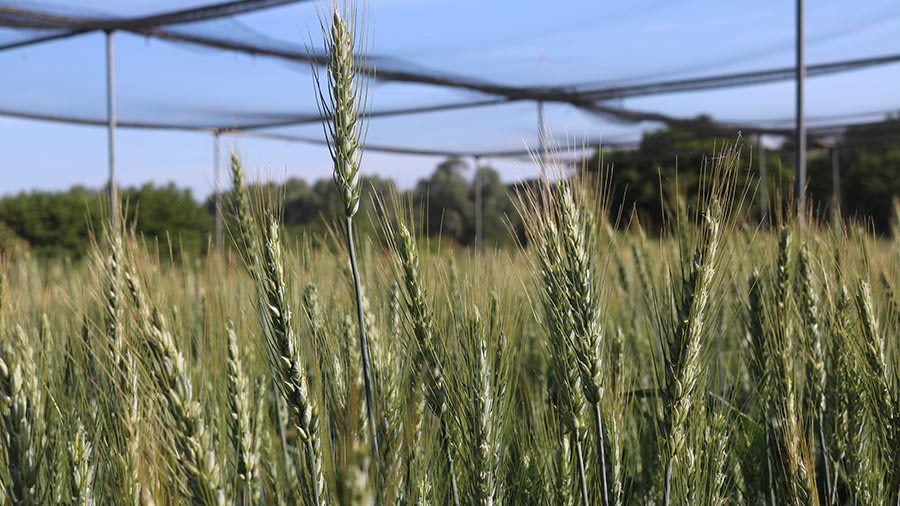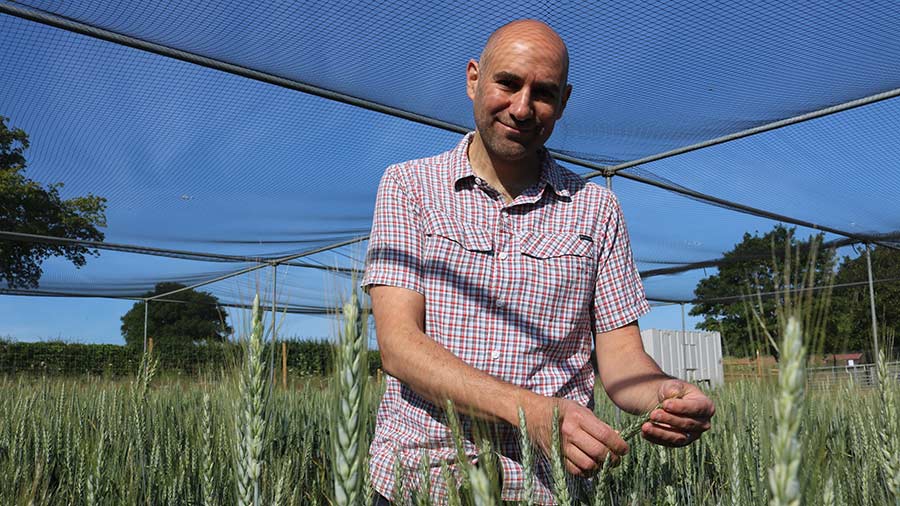Field trial success for iron and zinc fortified wheat
 © Tom Allen-Stevens
© Tom Allen-Stevens Scientists have succeeded in boosting the iron and zinc content of wheat grains, with no apparent yield penalty, according to initial results of 2022 UK field trials.
But the genetically modified (GM) wheat, which has significant health benefits, particularly for the malnourished, is unlikely to be grown commercially in the UK.
See also: Europe’s first gene-edited wheat trials see breakthrough
The wheat, developed by scientists at John Innes Centre, Norwich, has been modified with two genes involved in nutrient transport around the plant.
“This stops iron being locked away in the bran, from which it is poorly absorbed by the human gut,” explains Cristobal Uauy, who is leading the field trials alongside Janneke Balk and James Simmonds.
Previous work had identified a wheat gene encoding a vacuolar iron transporter (VIT2), which helps sequester iron in specific cell compartments.
The JIC team successfully overproduced VIT2 in developing grain, keeping the iron in the endosperm that forms white flour. This wheat line underwent successful field trials in 2019 and 2021.
More recently the nicotianamine synthase (NAS2) gene from rice, responsible for transporting nutrients around the plant, has been transferred into the wheat line, together with VIT2.
“The NAS2 gene is present in wheat, but we had more knowledge on its performance from studies in rice, so we used this rice gene. The sequences of the rice and wheat genes are about 90% identical,” explains Prof Uauy.
By increasing the levels of NAS2 in the whole wheat plant, iron and zinc are made more mobile and larger amounts are moved into the grains.
“This strategy has been tried and tested in rice and also in wheat in Australia, but it had not been combined with VIT2.”
This is the third year of GM wheat field trials in the UK, and the first time the VIT2-NAS2-stacked GM wheat, transferred into the variety Fielder, has been in the field.

Cristobal Uauy © Tom Allen-Stevens
GM wheat at harvest
“Harvest was a great success. The plots weren’t big enough to assess yield, but the components of grain yield were similar to the unmodified control, confirming there’s no yield lag,” reports Prof Uauy.
“Initial tests on the endosperm indicate there is a two-fold increase in iron in white flour, and also double the zinc in wholemeal flour.
“While some of the zinc is in the bran, we expect that it is more soluble and, therefore, bioavailable, as another positive effect of NAS2. This will be tested in gut cell cultures.”
The next step is to work with global partners to develop these lines into varieties that farmers can access and grow.
“Globally, this is a very significant trait that can address common nutrient deficiencies, particularly in developing countries.”
In the UK, flour for bread and biscuits is fortified with iron as a legal requirement, tripling base levels to 16.5 mg/kg, although there are questions about how bioavailable this is.
“The flour from the VIT2 wheat consistently contains at least 20mg/kg of iron. We should debate how we build health benefits into our food — there are significant advantages with GM, while we haven’t seen the negative consequences some people had feared,” he notes.

